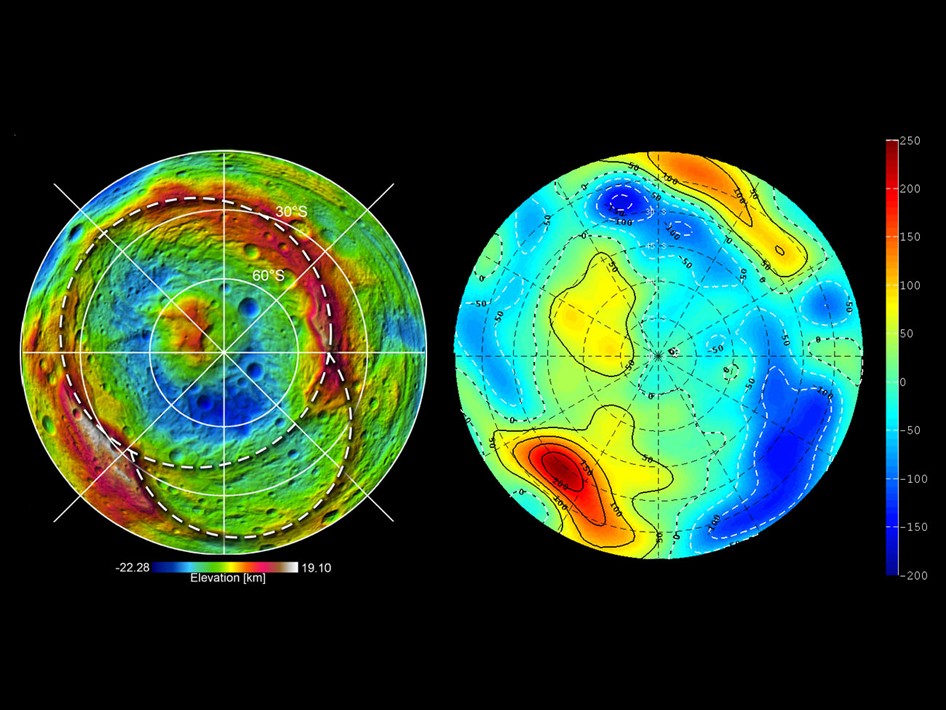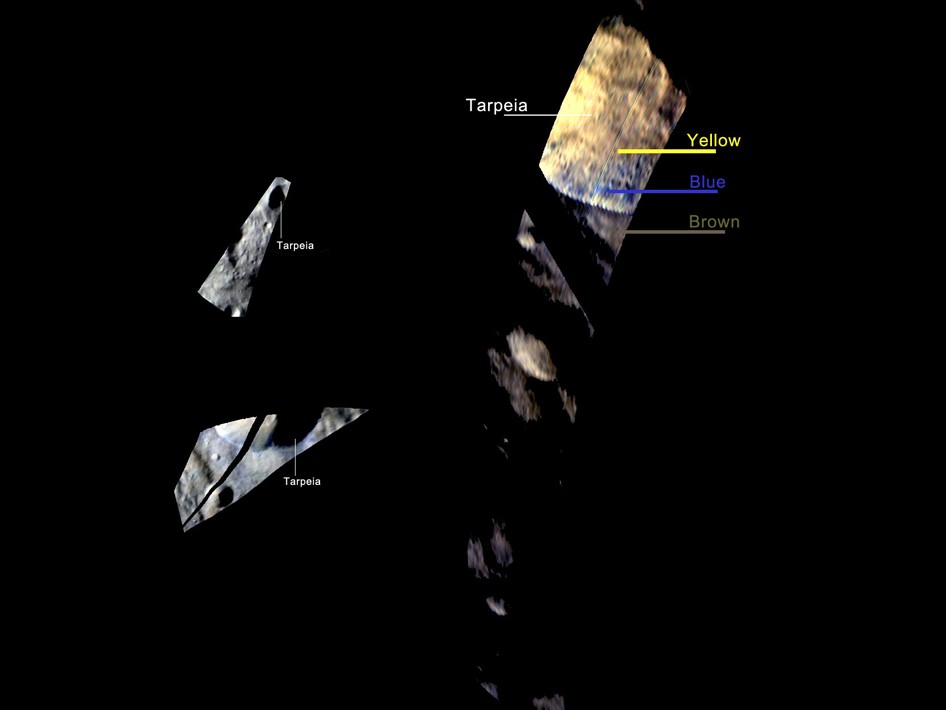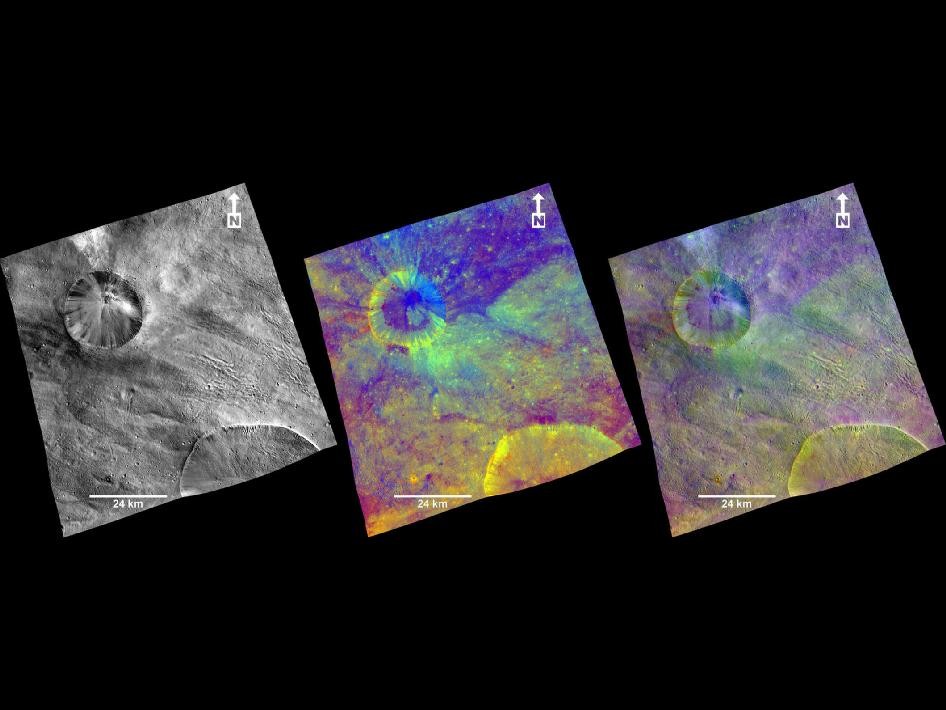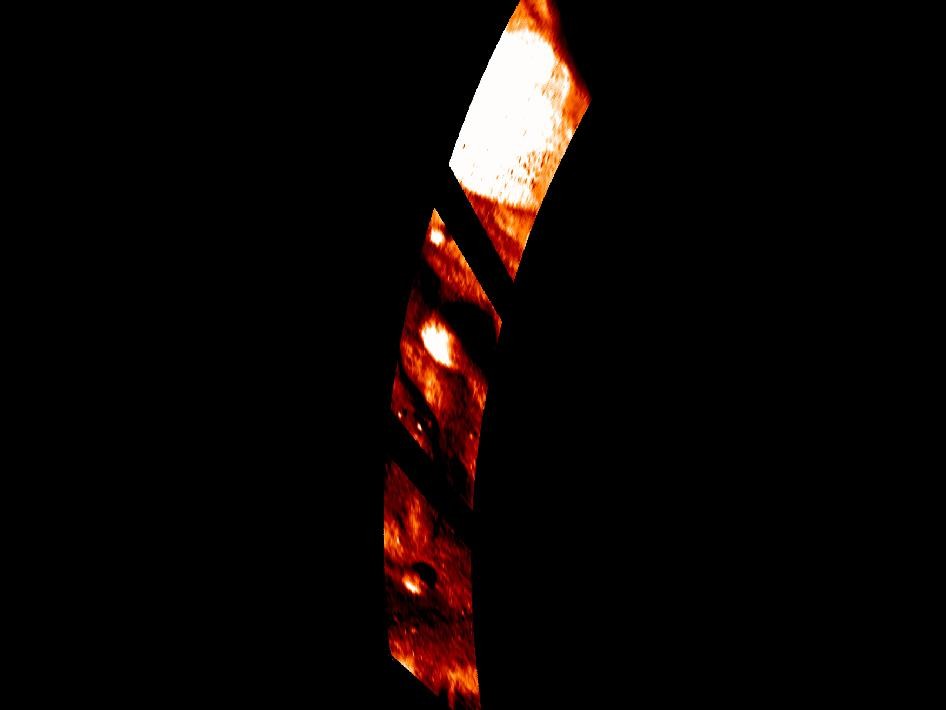Nasa Discovers Minerals on Giant Asteroid Vesta [PHOTOS]
Nasa astronomers have found that the giant asteroid Vesta contains minerals. They made the discovery with the help of the space agency's Dawn spacecraft which deployed an infrared mapping spectrometer to detect the minerals.
The images taken from 420 miles and 130 miles above the surface of the asteroid, clearly show a variety of surface mineral and rock patterns. Coded false-colour images helped them understand better about the composition of Vesta and it enabled them to identify various materials that were once molten below the asteroid's surface.
Astronomers also discovered breccias, rocks that contain bits and pieces of minerals, that were cemented together during impact from space debris. They found minerals like iron and magnesium, which often are found in the earth's volcanic rocks. Images also reveal smooth pond-like deposits, which might have formed as fine dust created during impact that settled into low regions.
"Dawn now enables us to study the variety of rock mixtures making up Vesta's surface in great detail," said Harald Hiesinger, a Dawn participating scientist at Münster University in Germany, in a statement. "The images suggest an amazing variety of processes that paint Vesta's surface."
The data received from the Dawn spacecraft also reveals huge amounts of minerals on the Tarpeia crater's steep slopes near the south pole of the asteroid. They believe that these minerals could have come from other space rocks that had collided with the asteroid.
Astronomers believe that the data collected from the Dawn will help them know more about the early solar system.
"After more than nine months at Vesta, Dawn's suite of instruments has enabled us to peel back the layers of mystery that have surrounded this giant asteroid since humankind first saw it as just a bright spot in the night sky," said Carol Raymond, Dawn deputy principal investigator at Nasa's Jet Propulsion Laboratory, in a statement. "We are closing in on the giant asteroid's secrets."




© Copyright IBTimes 2025. All rights reserved.



















